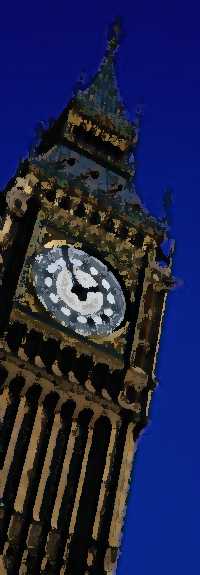WHAT IS SUPPORT?
“The amount and kind
of data for a particular argument depends on the importance and complexity of the subject. The more controversial the subject,
the more facts and support you will need to supply.” Elements of Argument: A text and Reader (6° ed) Annette T. Rottenberg.
Bedfordl
St.Martin’s, 2000.
p.53
Support is also called evidence
or proof. The following are types of support (evidence or proof) which you or any writer might use to prove a statement
I. FACTS—statements which can be verified by objective means such as by observing or by reading a reliable
account.
A. Specific examples
Six murders occurred in this
city last year and seven in 1999.
In 1920, American women were
given the right to vote.
When Robert Burns writes
My love is like a red, red, rose,” he is comparing his beloved to a beautiful flower.
B. Hypothetical examples
— create imaginary situations for others which encourage them to visualize what might happen under certain circumstances
“...the possibilities
for bluffing should not be forgotten; once on board, anyone could claim that a bottle of water was really a Molotov cocktail,
or that a paper bag contained a bomb” (Rottenberg p. 55).
II. STATISTICS
A. Information expressed
in numbers
Over 5,000 teenagers are
killed yearly in auto accidents involving drunken driving.
B. Comparative statistics—numbers
used in comparisons which indicate whether quantity is relatively Large or small, or used for measurements over time (p. 56).
“...50.9 percent of
those [school seniors questioned in 1989 reported that they had at least tried an illicit drug like marijuana or cocaine,
as against 53.9 percent in 1988 and 56.6 percent in 1987” (p.156).
****The relationships among
sets of numbers are often depicted in diagrams, tables, charts and graphs. You may be asked to interpret them or discover
relationships among sets of numbers.
III. OPINIONS—interpretations of facts
A. Suggest a cause for a
condition
“Another authority,
Joan Blumberg, believes that one cause [anorexia] may be biological, a nervous dysfunction of the hypothalamus” (p.
158-9).
B. Predict the future
Raising the passing scores
on Florida’s
FCAT will result in fewer students graduating from high school in the spring.
C. Suggest solutions to problems
One way to keep our roads
in good condition is to repave ten percent of them every ten years.
D. Expert opinion —
the opinion of a person with knowledge gained from study and experience in a particular field
Senator Smith, Chairman of
the Senate Budget Committee, says that the state budget will have to be cut in January because tourism has declined since
September.
HOW TO
EVALUATE EVIDENCE
Adapted from: Elements of
Argument: A text and Reader (ed) Annette T. Rottenberg. Bedford!
St.Martin 2000, pages 160—
I. To evaluate factual evidence,
ask the following questions:
A. Is the evidence up to
date?
B. Is the evidence sufficient?
Remember, the more complex the subject. the more evidence you may need.
C. Is the evidence relevant?
D. Are the examples typical
of all the examples you do not use?
E. Are the examples consistent
with your experience and that of the reader?
F. Is it accurate?
II.. To evaluate statistics,
ask ALL the above questions and those below:
A. Are the statistics from
trustworthy sources?
B. Are the terms clearly
defined?
C. Are the comparisons between
comparable things?
D. Has any significant information
been omitted?
III. To evaluate opinions,
ask the following questions:
A. Is the source qualified
to give an opinion on this subject?
i. What is the author’s
point of view?
ii. Is this the area in which
the source is an expert?
iii. Is the source recognized
by others in his/her field??
iv. Has the source won awards
or honors? B. is the source biased for or against his or her interpretation?
C. Has the source provided
sufficient and adequate evidence? Apply the tests for evidence.
D. What to do if experts
disagree.
i. Apply the tests above.
Does one expert seem more qualified, provide better proof, or seem less biased?
ii. Continue to read other
authorities to decide whether a greater number of experts agree with one opinion?
iii. REMEMBER: some arguments
will have to remain unsettled for now.
CLASSIFICATION OF SOURCES
Adapted from An American
History Primer Richard L. Mumford. Harcourt, Brace, Jovanovich Publishers, 1990, page 374.
Sources can be classified
as primary or secondary.
Primary sources can be written
or non-written
A. Written primary sources
— manuscripts, letters, diaries, journals, literary works,
newspapers, memos, descriptive
accounts, memoirs and autobiographies
B. Non-written primary sources
— taped interviews, films, videotapes, photographs
H. Secondary sources—When
an author uses primary sources to write a book about an event, person, or work of literature, a secondary source is produced.
Secondary sources are professionally researched and clearly written works about events and developments in the past, or about
the literary or artistic works of others. An author may use both primary and secondary sources. Most books in the history
section of a library are secondary sources.
M. OIin/B.Bone
10/2001
